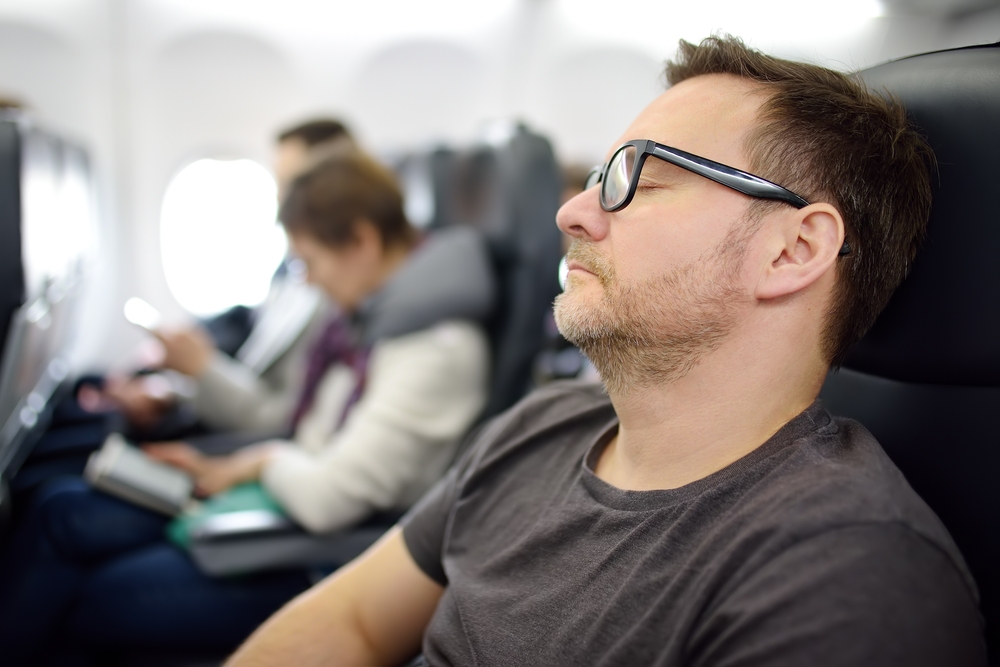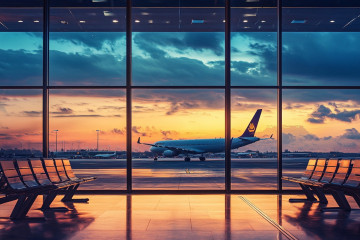Exploring a new country can be a blast.
The process of getting there … not so much.
Roomy and comfortable business and first-class plane seating is out of reach for many Australian travellers, who instead find themselves squeezed shoulder to shoulder with strangers in economy for upwards of 10 hours.
This uncomfortable experience, along with flying, can have consequences for your body and health.
Choose your seat wisely
You might be happy to leave your seat up to chance, or you could prefer a window seat to catch the first glimpse of your destination.
Australian Frequent Flyer editor Matt Graham said choosing the aisle seat will make it much easier to get up and about during your flight, from going to the toilet to walking up and down the aisle for some light exercise.
Choosing an exit-row seat, or any seat that has extra leg room, will also give you more freedom to do some leg exercises while seated.
Talk with your doctor
Travelling at high altitudes can put a lot of pressure on your body, leading to lower levels of oxygen in your blood and all sorts of pressures on the rest of your system.
Guido Carim Junior, senior lecturer in aviation at Griffith University, said people with pre-existing conditions such as high blood pressure may find flying exacerbates the condition.
He recommended against travelling if you have a cold or flu, as any pocket of air in your body tends to naturally expand when flying, including your stomach, sinuses and inner ears.
This means you could be risking damage to your sinuses or inner ears if you travel by plane while they’re blocked, as they may not be able to equalise the air pressure.
And if you’re taking any medication, Dr Carim Jr recommended asking your doctor for advice before jetting off, as more air pressure can strengthen the effects of medicine.
Stay hydrated
Mr Graham said one of the most important things to do on a flight is drink water, as low humidity in the cabin means your body loses a lot of moisture.
This is important to keep in mind for every traveller, but Dr Carim Jr said the elderly or certain health conditions may be more affected.
“The companies are doing a really good job nowadays. They are handing over bottles of water every now and then, or they actually [have a] water fountain available in some aircraft models in the back, close to the kitchen,” he said.
He said drinking about 200ml of water every half hour not only keeps you hydrated – it’ll also make you need to use the toilet more often, which will help keep you active during the flight.
Get moving
Extra air pressure and lack of movement for more than 10 hours can wreak havoc on your body.
Some consequences include a build-up of fluid in your limbs, and serious issues like deep vein thrombosis (a blood clot), which can lead to a life-threatening pulmonary embolism if the clot travels to your lungs.
According to data combined from 18 studies, the longer you travel, the greater the risk of blood clots; after four hours, the risk becomes 26 per cent higher for every two hours of air travel.
Staying active during your flight is your best defence.
This could mean making the effort to stand up and walk around every hour or so, or do some seated exercises.
Bevan Chen, accredited exercise physiologist at Pivotal Motion, said exercising or stretching in-flight can also help prevent increased pain from pre-existing areas like the knee, hip and lower back.
“If someone’s got a previous existing injury … a lot of those can be set off, in terms of pain and discomfort, just purely by [being] stuck in that one seated position for a long time,” he said.
“The important thing is to try and stop that from happening, and not let that set off, and just have plans in place to try and help ease that discomfort.”
If you have a pre-existing injury you’re worried about, Mr Chen recommended seeing your regular physiologist for advice before travelling on what sort of exercises and stretches to do on a plane.
Apart from walking around the cabin, he said some things you can do to keep active include the following, with a recommended three rounds of 10 repetitions per exercise:
- Stretching your neck from side to side
- Rolling your shoulders backwards and forwards
- Tucking in your chin (giving yourself a double chin), and keeping it tucked in while pushing your head back against the headrest
- Performing a seated thoracic stretch by placing your hands on the chair in front, pushing your chest down towards the ground, holding the position for three to five seconds, relaxing, and repeating
- Stretching your forearms, with your arms held out in front, and the top of your hands face you
- Performing pelvic rocks by rocking your hips/pelvic area backwards and forwards, as well as side to side, while seated
- Bringing each knee to your chest
- Rotating your knees where possible
- Raising your calves in front of you
- Marching on the spot while seated
- Performing a knee extension by putting your feet underneath the chair in front of you, and then pushing up against it using the muscles on top of your legs.
With all of the above exercise, remember to make sure you’re not disturbing passengers sitting around you.




2 Comments
propecia 1mg nz
40 mg amoxicillin